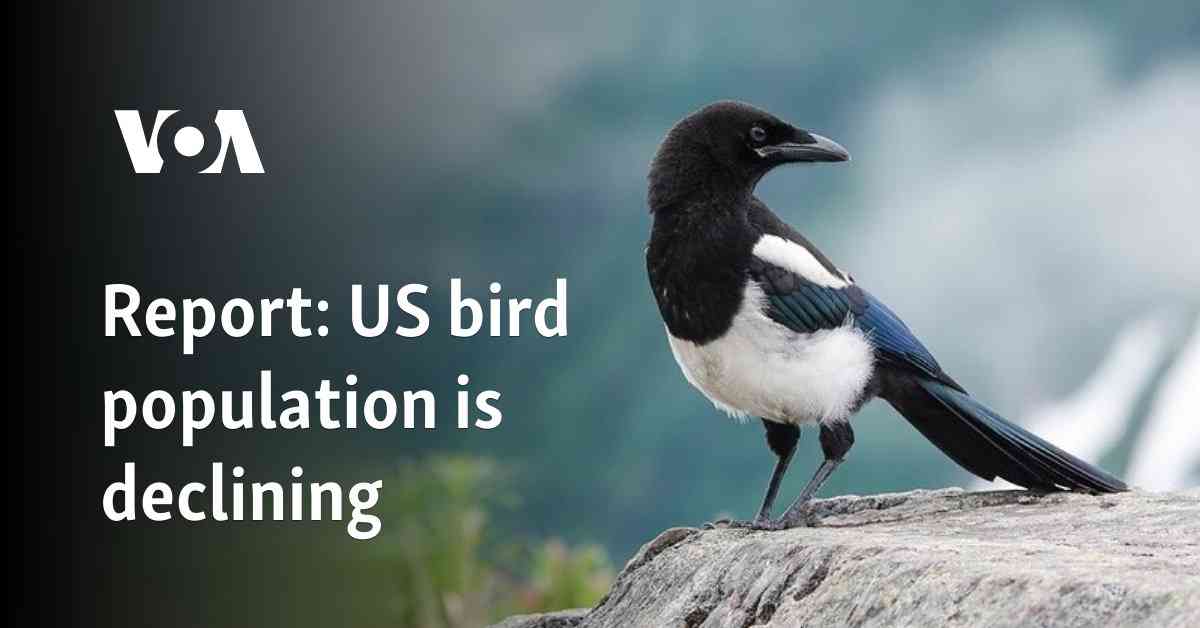The recent report on the decline of the U.S. bird population has sent shockwaves through the scientific and conservation communities. Published by a coalition of experts, the 2025 U.S. State of the Birds report highlights the troubling trend of dwindling bird numbers across the country. Habitat loss and climate change have emerged as the primary culprits behind this alarming phenomenon, with over 100 bird species teetering on the brink of extinction after losing more than half of their populations in the past half-century.
### Habitat Loss and Climate Change: A Looming Crisis
One of the most pressing issues identified in the report is the widespread decline in bird populations across all habitats, including the once-thriving duck population. Previously hailed as a conservation success story, ducks have seen a significant drop in their numbers, with a staggering 30% decrease since 2017. Despite this decline, duck populations still remain higher than they were in 1970, offering a glimmer of hope amidst the gloom.
“The only bright spot is water birds such as herons and egrets that show some increases,” noted Michael Parr, president of the American Bird Conservancy, in a statement to Reuters. This resilience in certain species underscores the complex interplay of factors influencing avian populations and the urgent need for targeted conservation efforts to safeguard vulnerable bird species.
### Urgent Conservation Needs and a Call to Action
Amanda Rodewald, the faculty director of the Cornell Lab of Ornithology’s Center for Avian Population Studies, sounded the alarm on the critical state of bird populations in the U.S. “Roughly one in three bird species (229 species) in the U.S. requires urgent conservation attention,” she emphasized to Reuters. This sobering statistic highlights the breadth and depth of the crisis facing avian biodiversity and underscores the importance of swift and decisive action to reverse the tide of decline.
Among the hardest-hit species identified in the report are the mottled duck, Allen’s hummingbird, yellow-billed loon, red-faced cormorant, greater sage-grouse, Florida scrub jay, Baird’s sparrow, saltmarsh sparrow, mountain plover, Hawaiian petrel, Bicknell’s thrush, Cassia crossbill, pink-footed shearwater, tricolored blackbird, and golden-cheeked warbler. These birds, classified under the “red alert” group, are already receiving protection under the U.S. Endangered Species Act, signaling the severity of their decline and the urgent need for conservation interventions.
Georgetown University biologist Peter Marra, who was not involved in the report, offered a poignant analogy to underscore the gravity of the situation. “For each species that we’re in danger of losing, it’s like pulling an individual thread out of the complex tapestry of life,” he remarked to the Associated Press. This poignant metaphor captures the interconnectedness of ecosystems and the irreplaceable role that each species plays in maintaining ecological balance.
While the challenges facing U.S. bird populations may seem daunting, there is room for optimism, as evidenced by the remarkable recovery of the bald eagle. Once on the brink of extinction, this majestic bird has made a comeback thanks to concerted conservation efforts and legal protections. The resurgence of the bald eagle serves as a beacon of hope in an otherwise bleak landscape, demonstrating that with collective action and unwavering commitment, we can reverse the tide of decline and secure a brighter future for our feathered friends.
In conclusion, the 2025 U.S. State of the Birds report serves as a clarion call to action, urging policymakers, conservationists, and the public to come together to protect and preserve our avian biodiversity for future generations. By heeding the warning signs and taking proactive steps to address the root causes of bird population decline, we can ensure a thriving ecosystem where birds soar high and free, enriching our lives with their beauty and song.














